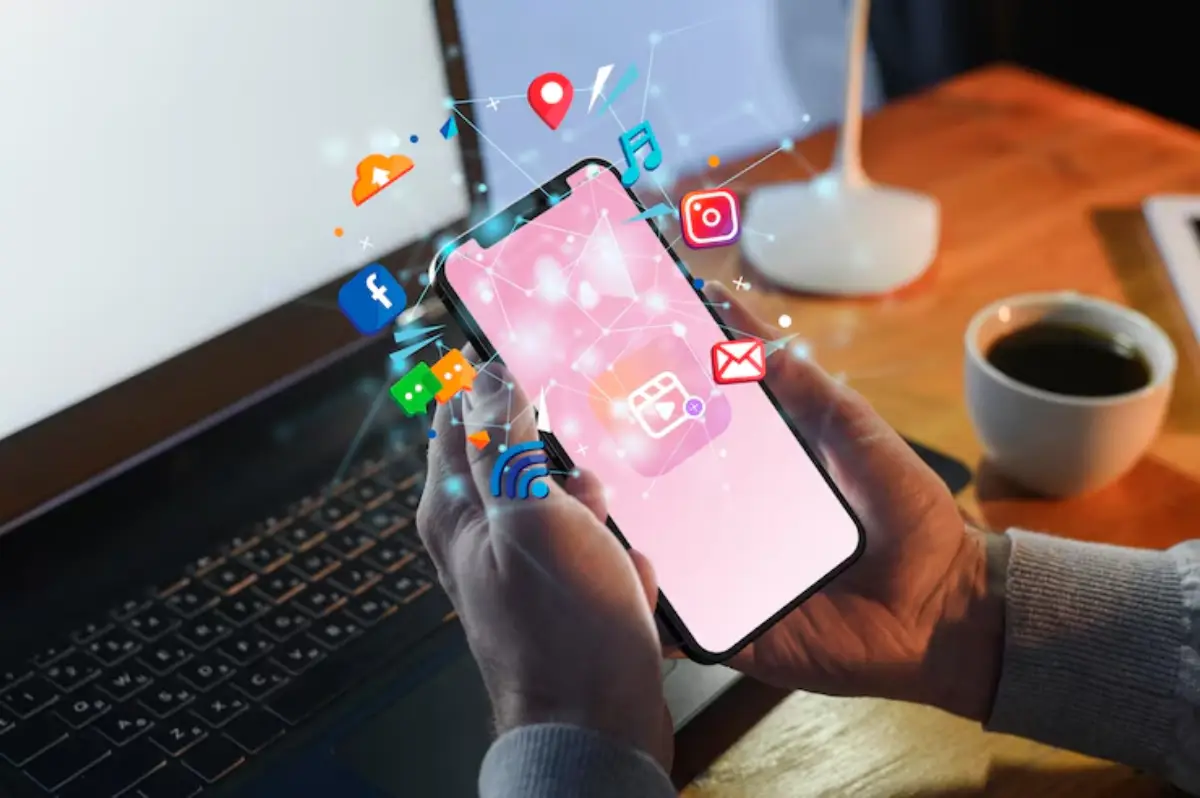
Social Media Scrolling vs. Productivity
Have you ever opened your phone to check one message, only to find yourself still scrolling 45 minutes later? If so, you’re not alone. Social media has a way of pulling us in and keeping us there far longer than we planned. Whether the dopamine hits from likes and shares or the endless stream of new content, this digital distraction can quietly chip away at your ability to focus, produce, and even rest.
In today’s fast-paced, always-connected world, screen addiction and social media avoidance aren’t just buzzwords—they reflect genuine struggles many of us face daily. This article dives into the growing tension between social media scrolling and productivity. You’ll gain practical deep focus tips, understand the psychology behind your digital habits, and discover how to reclaim your time and mental energy, without giving up tech altogether.
The Cost of Scrolling: What’s Happening to Your Brain?

Let’s start with the science. When you scroll through social media, your brain releases dopamine, a feel-good neurotransmitter associated with reward. Each new post, reel, or notification gives a little “hit” of pleasure, encouraging you to keep going.
Over time, this reinforces a habit loop:
- Trigger: You feel bored or stressed.
- Behaviour: You open Instagram, TikTok, or Twitter (now X).
- Reward: You get a hit of dopamine from entertaining content or social validation.
This loop is designed to be hard to break. And while it might feel harmless in the moment, it can significantly impair attention span, increase mental fatigue, and reduce your brain’s capacity for deep work.
According to a study by Microsoft, the average human attention span dropped from 12 seconds in 2000 to 8 seconds by 2015, shorter than that of a goldfish. The study linked this decline to our increasing use of screens and social media.
But what does this mean for your productivity?
Social Media Avoidance: Why Total Detox Isn’t Always the Answer
You might be tempted to go cold turkey—delete the apps, lock your phone away, and vow never to scroll again. While this can work for some, it often leads to rebound behaviours or isolation, mainly if your social media use includes meaningful connections.
Instead, consider intentional social media avoidance, which involves setting clear boundaries while engaging on your terms.
Here’s how to practise mindful avoidance:
- Set app limits: Use your phone’s screen time features to restrict daily use.
- Create tech-free zones: Keep phones out of your bedroom, kitchen, or workspace.
- Schedule social time: Check social media during set windows—like after lunch or before dinner—rather than on impulse.
- Turn off notifications: This reduces the “trigger” part of the habit loop.
By using these techniques, you’re not rejecting social media entirely—you’re regaining control over how and when you engage with it.
How Screen Addiction Creeps into Your Productivity
You might not call it addiction, but if you find it difficult to stop scrolling even when you know you should be working, studying, or sleeping, then your screen habits may be affecting more than you think.
Signs you’re slipping into screen addiction:
- You check your phone immediately upon waking.
- You lose track of time while scrolling.
- You feel anxious or irritated when you can’t access social media.
- You delay or avoid essential tasks.
- You struggle to concentrate on offline activities.
These behaviours can affect your mental health, professional output, academic performance, and personal relationships.
Incorporating emotional avoidance awareness can also help. We often scroll to avoid uncomfortable feelings, such as stress, boredom, or uncertainty.
Deep Focus Tips That Work
Reclaiming your focus in a digital world takes more than willpower—it requires systems and structure. Here are proven strategies to rebuild your capacity for deep work:
1. Use the Pomodoro Technique
Work in focused 25-minute sprints followed by 5-minute breaks. After four rounds, take a more extended break (15–30 minutes). This method boosts stamina and curbs burnout.
2. Time-block your day
Schedule your day in chunks—set aside specific hours for email, meetings, focused work, and social media. Treat these time blocks like appointments.
3. Single-task, not multitask
Studies have shown that multitasking reduces productivity by up to 40%. Focus on one task at a time to do deeper, better-quality work.
4. Make use of website blockers
Apps like Cold Turkey, Freedom, or LeechBlock allow you to block distracting websites during focus periods.
5. Work with your natural rhythm
Identify your peak productivity hours—morning, midday, or night—and plan your most important tasks accordingly.
These deep focus tips align with what’s known in productivity circles as “flow state”—a condition of deep immersion where time seems to disappear, and your output skyrockets.
Replacing the Scroll: Healthier Alternatives

Part of changing behaviour is replacing a habit with a healthier alternative. So, what can you do instead of reaching for your phone?
- Go for a walk – Even 10 minutes outdoors refreshes your mind.
- Journal or sketch – Helps process emotions without digital input.
- Listen to music or a podcast – Provides passive stimulation without visual distraction.
- Try a breathing exercise or short meditation – Excellent for refocusing the mind.
These activities offer similar stress relief or entertainment without leading to the attention traps common with scrolling.
In moments of vulnerability, building a habit of reaching for a non-digital option can significantly shift your reliance on screens.
Real-Life Stories: When Digital Habits Shift
Asha, 34, Marketing Manager in Manchester: “I didn’t realise how much I relied on scrolling to decompress until I took a two-week screen break. The first few days were tough, but I started reading again by day five, sleeping better, and even cooking more. It wasn’t about quitting permanently but resetting my habits.”
Tom, 21, University Student in Birmingham: “During finals, I used an app blocker to lock Instagram and Reddit. It felt extreme, but I was amazed by how much more time I had. I finished assignments early and felt less overwhelmed.”
These stories highlight the power of intentional change, not just detoxing but actively replacing mindless habits with mindful choices.
Workplace Culture and Digital Boundaries
The issue of social media vs. productivity isn’t limited to personal time—it seeps into the workplace too. Many remote workers or freelancers struggle with blurred lines between work and leisure.
If you’re working from home, consider:
- Setting defined “online” hours for both work tasks and social media.
- Creating a separate workspace (even if it’s just a corner of a room).
- Communicating boundaries with teammates about response expectations.
For employers, encouraging a focus-driven culture, rather than one that glorifies always being online, can significantly boost output and morale.
From Scroll to Strategy: Building a Personal Focus Plan
Rebalancing your screen use starts with a personalised strategy. Here’s what to include:
- Awareness: Track how much time you spend on social media daily.
- Goals: Define what productivity means to you. Is it completing tasks faster, being more creative, or feeling less mentally scattered?
- Boundaries: Choose which platforms to limit and when.
- Replacements: Select alternative habits to turn to when the urge strikes.
Integrating these steps with practices like mental clarity techniques can further support your journey towards deeper focus and reduced avoidance.
Conclusion: Choose Focus Over the Feed
Social media isn’t the enemy—but unchecked scrolling certainly is. By becoming more aware of your habits, setting boundaries, and using effective focus strategies, you can shift from passive consumption to purposeful action.
Remember, your attention is one of your most valuable assets. Don’t let it be hijacked.
You deserve to feel present, productive, and in control.
Start by making one small change today—put your phone down, close the app, and give your mind the space it craves. Whether it’s five minutes or five hours, every moment you reclaim is a step toward a more precise, calmer, more focused you.


